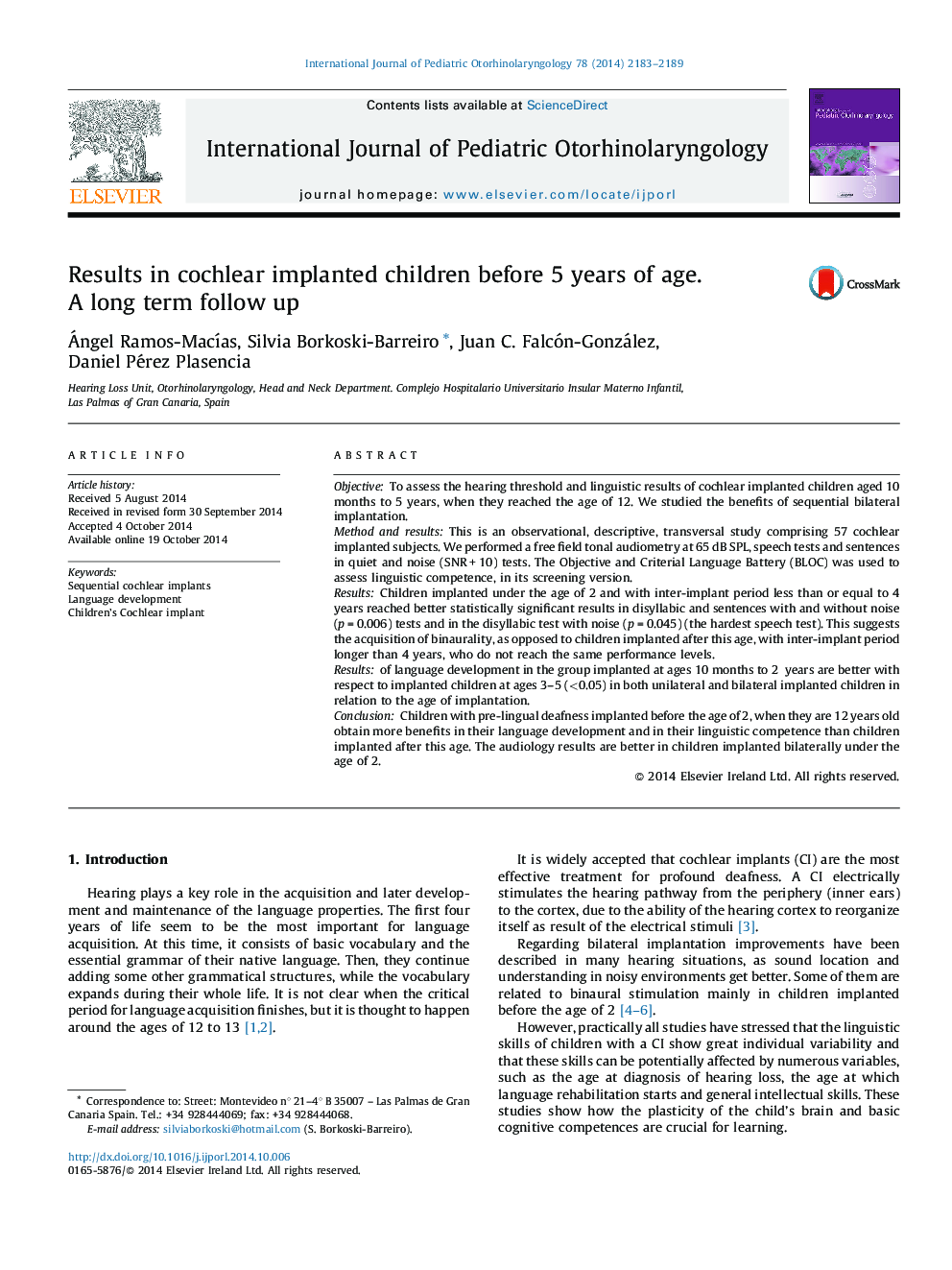| Article ID | Journal | Published Year | Pages | File Type |
|---|---|---|---|---|
| 4111805 | International Journal of Pediatric Otorhinolaryngology | 2014 | 7 Pages |
ObjectiveTo assess the hearing threshold and linguistic results of cochlear implanted children aged 10 months to 5 years, when they reached the age of 12. We studied the benefits of sequential bilateral implantation.Method and resultsThis is an observational, descriptive, transversal study comprising 57 cochlear implanted subjects. We performed a free field tonal audiometry at 65 dB SPL, speech tests and sentences in quiet and noise (SNR + 10) tests. The Objective and Criterial Language Battery (BLOC) was used to assess linguistic competence, in its screening version.ResultsChildren implanted under the age of 2 and with inter-implant period less than or equal to 4 years reached better statistically significant results in disyllabic and sentences with and without noise (p = 0.006) tests and in the disyllabic test with noise (p = 0.045) (the hardest speech test). This suggests the acquisition of binaurality, as opposed to children implanted after this age, with inter-implant period longer than 4 years, who do not reach the same performance levels.Resultsof language development in the group implanted at ages 10 months to 2 years are better with respect to implanted children at ages 3–5 (<0.05) in both unilateral and bilateral implanted children in relation to the age of implantation.ConclusionChildren with pre-lingual deafness implanted before the age of 2, when they are 12 years old obtain more benefits in their language development and in their linguistic competence than children implanted after this age. The audiology results are better in children implanted bilaterally under the age of 2.
